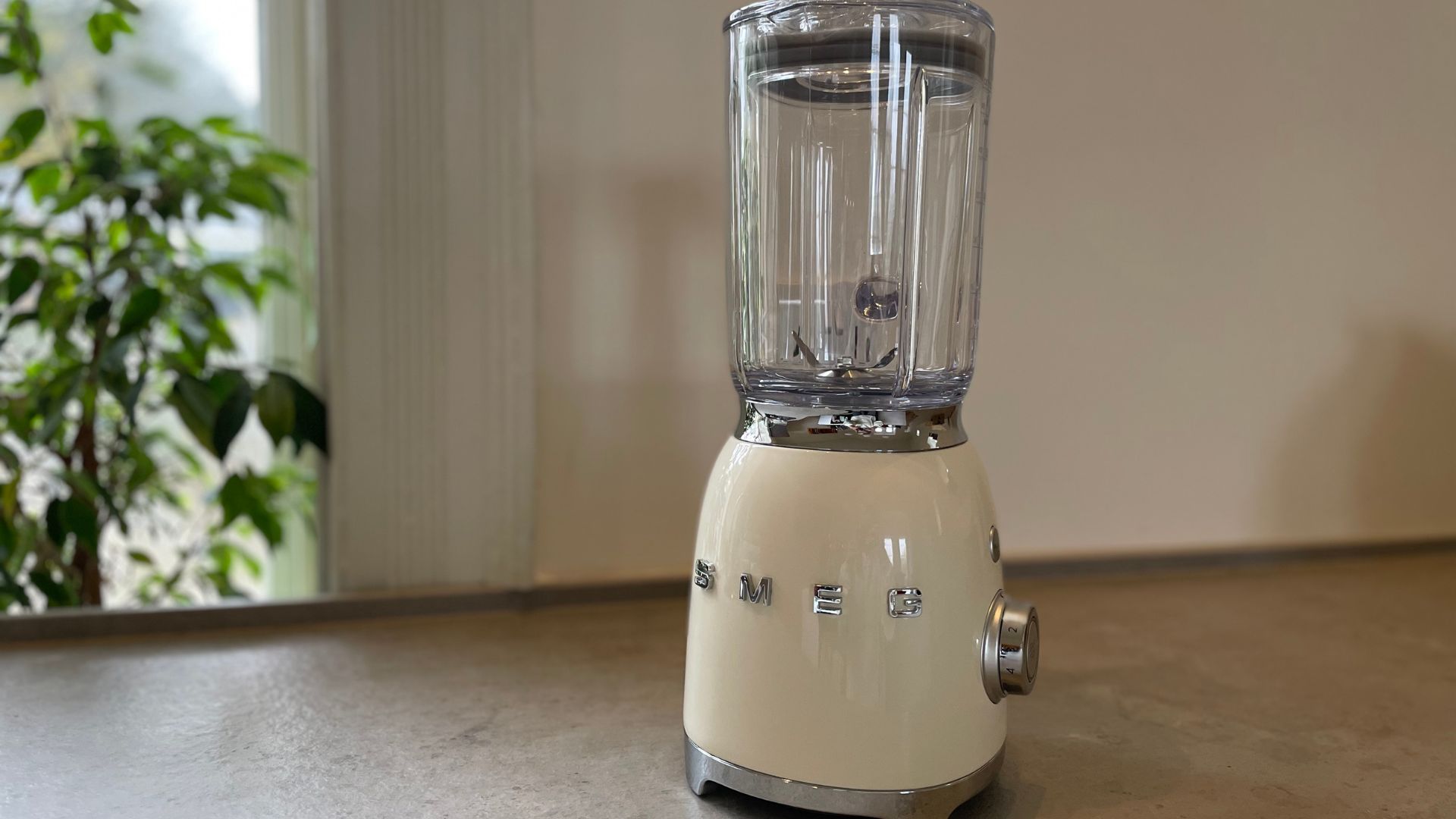
There are plenty of jug blenders on the market that will do a decent job of your morning smoothie or homemade hummus. But none, I promise, will look as good as the Smeg Retro 50s blender whilst doing it.
This sleek, chic kitchen appliance is often cited as one of the best blenders on the market, especially for the style-conscious. That’s why I was so eager to see whether this can deliver on brains and beauty.
In true Smeg style, this whizzes up the true luxury experience. It might not be as robust or versatile as their newer space-age style blender (that one can vacuum seal your smoothies and make hot soups), but it’s great if you want a blender that covers the basics.
Specifications
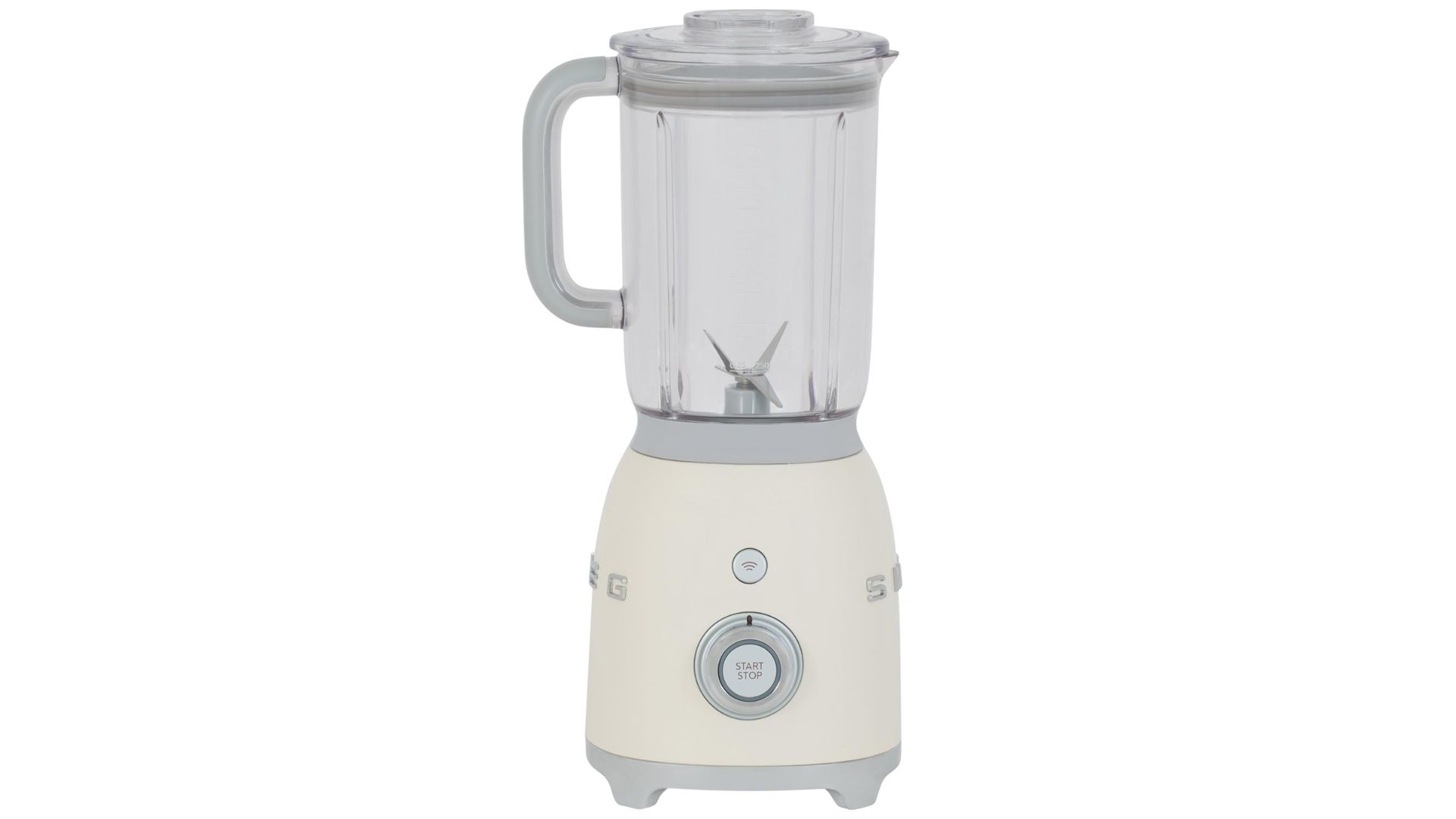
Unboxing
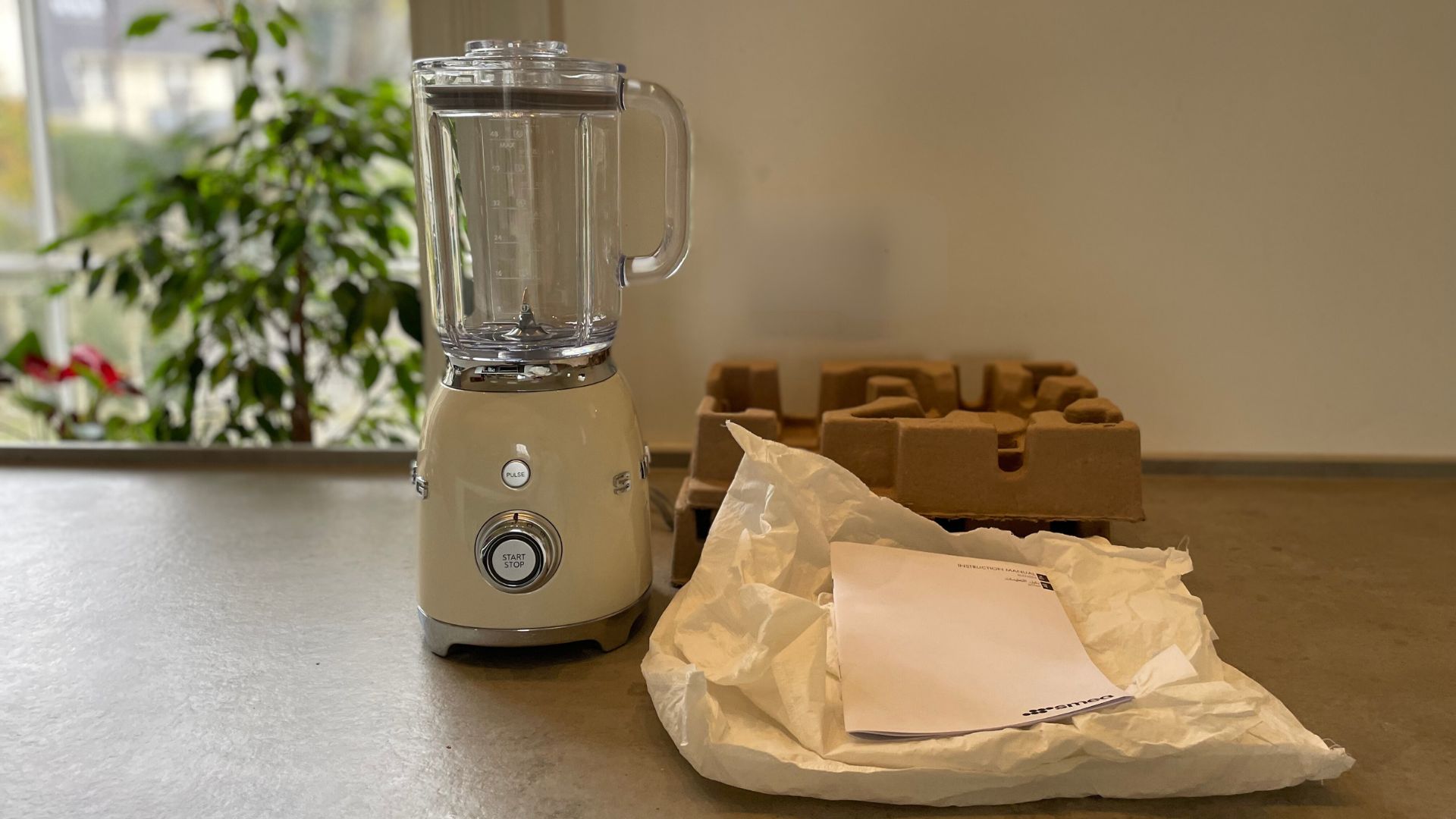
Smeg has taken some really modern, impressive steps with their packaging. The robust box flattens down and can be easily recycled and the same applies for all the bits inside the box too. You’ll get a paper wrap around the blender, which does a brilliant job of keeping it sparkly and shiny in all the right places without you needing to worry about the plastic footprint of your blender.
It’ll come in a few parts: you have the base, with its cord wrap and neat feet; the 1.5 litre blending jug, which is crafted from BPA-free Tritan; and the lid, which has a useful lift out top which you can use to measure and add up to 50ml of extra liquid to your blends through. All in all, it’s a smart and simple blender. I couldn’t ask for more.
Who would it suit?
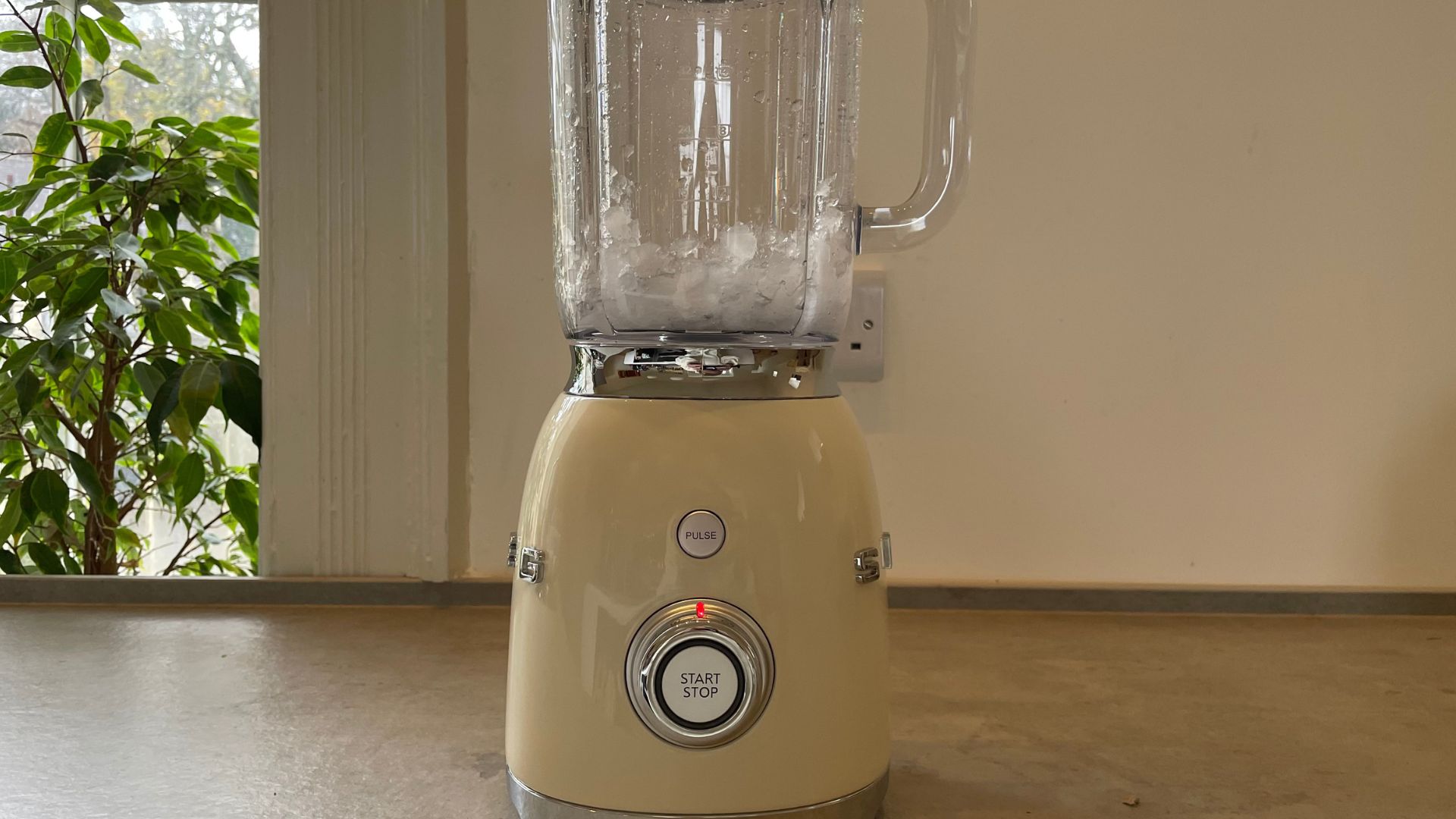
Smeg’s stylish design and high price point make this a very obvious choice for people who are happy to splurge a little extra money for nice aesthetics.
Normally, blenders aren’t very attractive, so people don’t tend to leave them on the counter. However, the Smeg blender is one that I often see displayed on the kitchen counters on social media. People like to show these off and they enjoy keeping them on display. Who wouldn’t?
The beauty and finish can’t carry the blender the whole way though. It has to be good and, in truth, this is. As a basic blender for making a jug full of smoothie, this is flawless. It did struggle with lower liquid content foods, such as açai bowls and ice cones, but for soups, smoothies, protein shakes, and even hummus, this was wonderful.
What is it like to use?
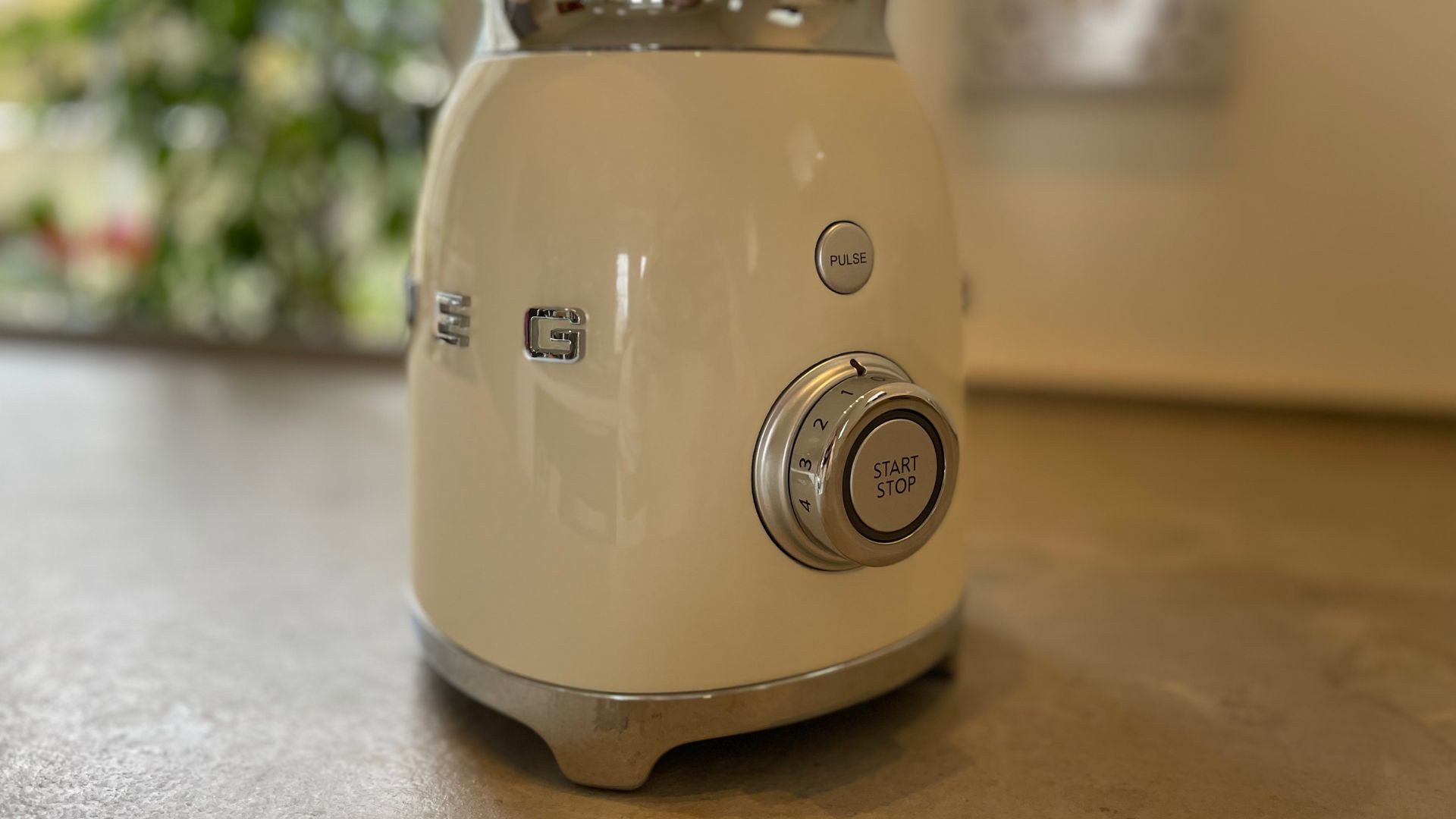
In true Smeg style, this was really simple and straightforward to use. The blender has a dial that you twist to set different speeds (from 1-4) and there’s a pulse button above the dial too. You’ll see a red light on the top of the dial to indicate that the blender is powered up and ready to go and then, the rest is up to you.
It’s helpful that the pitcher is made from Tritan, because it’s light to hold, even when full of 1.5 litres. It’ll also stay relatively scratch free and is much harder to smash than glass, for example.
Test 1: smoothie
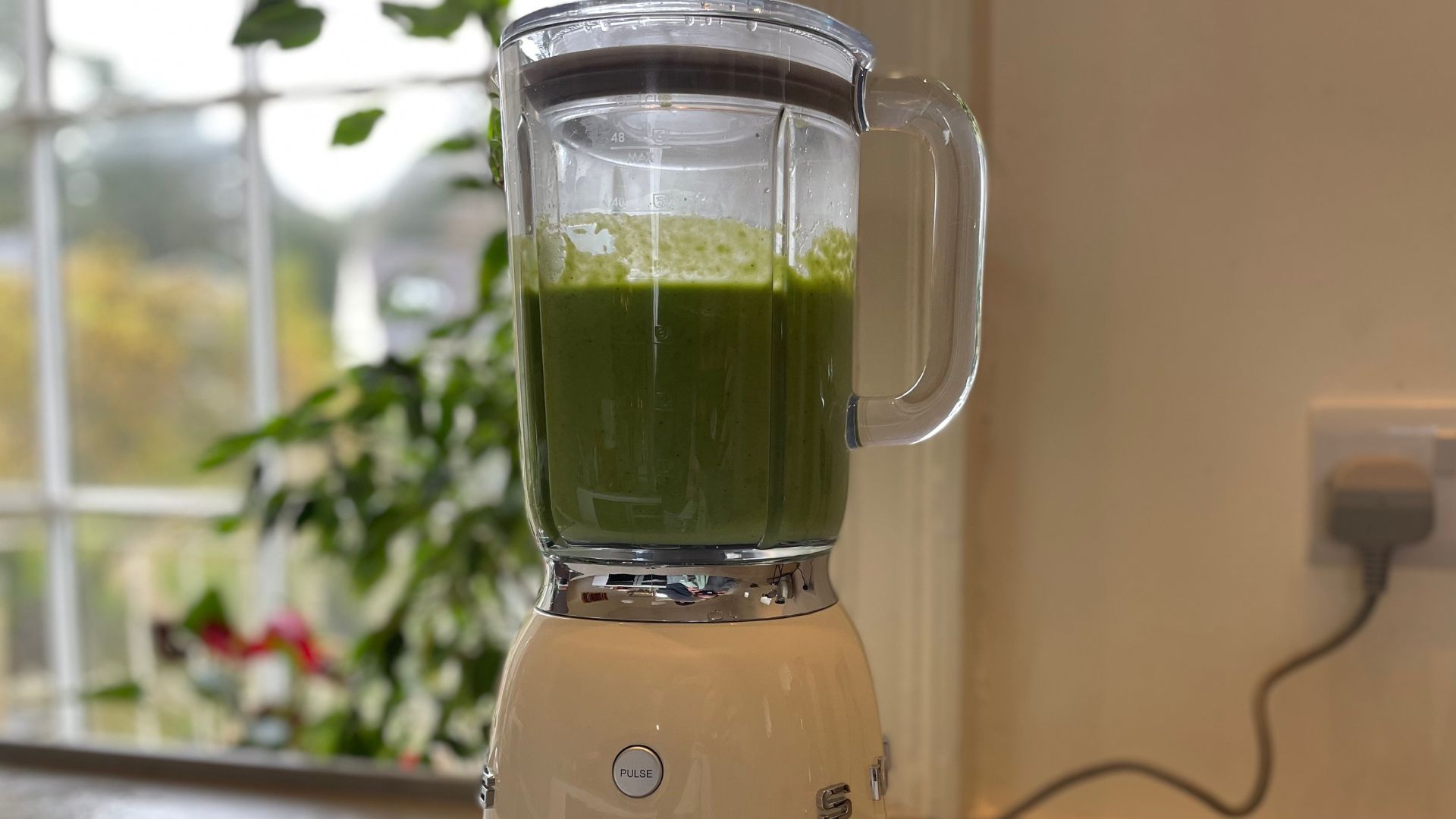
I test all of our blenders on making smoothies and protein shakes because this is really the bare minimum for what makes a good blender. Of course, I make things tricky by throwing in leafy greens, seedy berries, fibrous oats, and ice — you need to be able to whizz up anything into a delicious smoothie. To give this its first test, I put bananas, spinach, frozen pineapple, kiwi, ice cubes, avocado, oats, and almond milk into the Smeg blender. I twisted the dial to a respectable speed of 2 and let it whizz away. Within a minute, I had at least four servings of smoothie ready to drink. None of the skins, ice crystals, or seeds were left unblended, so my smoothie tasted really creamy. The motor didn’t run any louder than 72 dB, which is impressive given how much blending power this needed behind it. All in all. This was a great result.
Test 2: Hummus
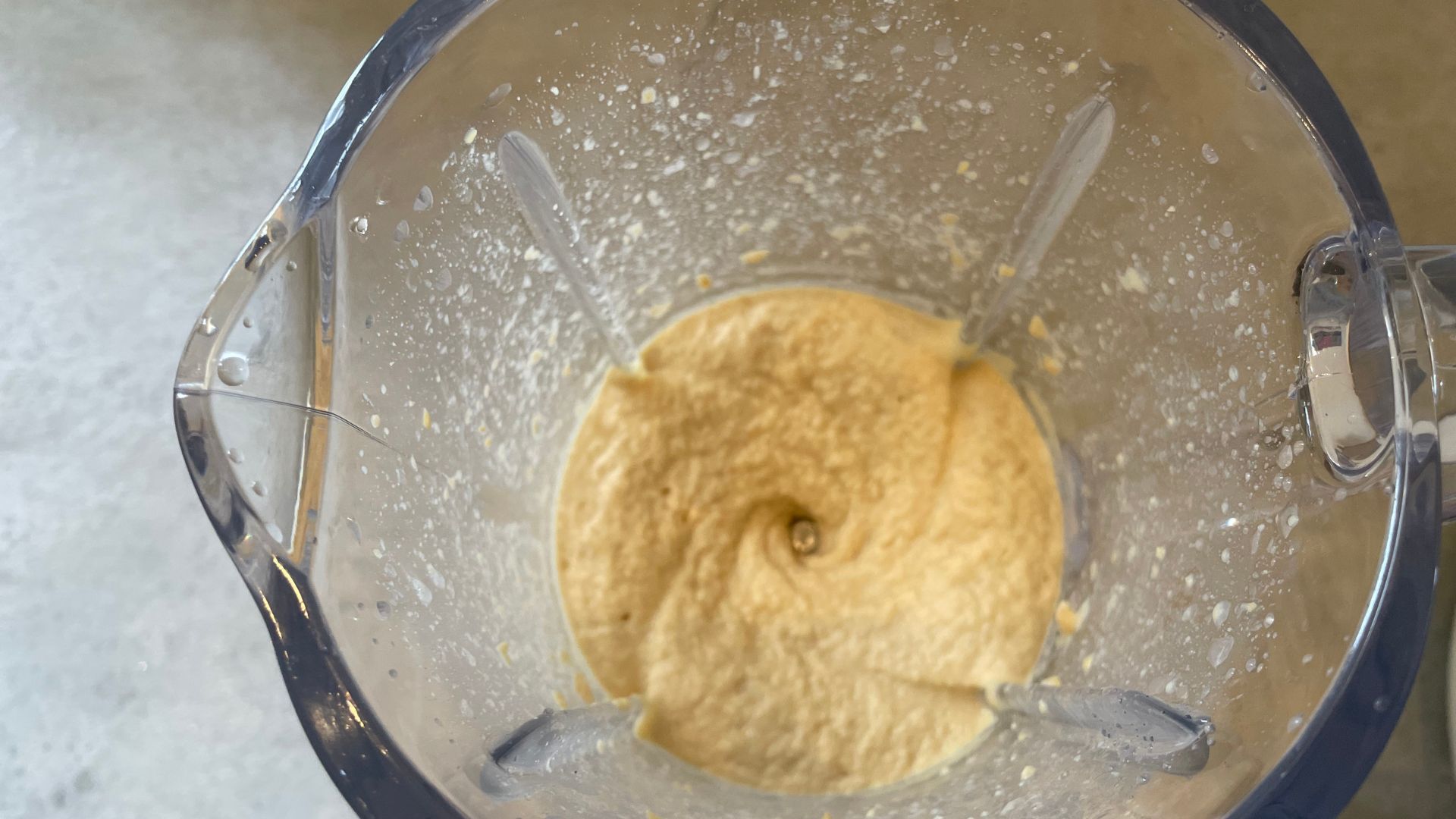
I always run a test on dips, because these have lower liquid contents, so they can be much harder to blend. Hummus is normally my dip of choice because chickpea skins can be hard to whizz up into nothing, especially in comparison to avocado for guacamole, for example. So, I added a tin of chickpeas, a spoonful of tahini, a squeeze of lemon, cumin, salt, and olive oil to the blender. You can see from the image that this achieved some impressive results. The hummus was silky smooth and well blended, without me needing to stop and stir the blend. It wasn’t loud either. All in all, I was impressed.
Test 3: crushed ice

This is the final test that I give all blenders and, arguably the toughest. I put a handful of ice cubes into the pitcher with a splash of water and set it to pulse. Whilst I did get a decent layer of crushed ice, there were some parts of the cubes that were left untouched. The crushed ice that I did have was more slushy than powdery, so I know that you can get better with other blenders. This did do a decent job though.
Cleaning, storage, and maintenance
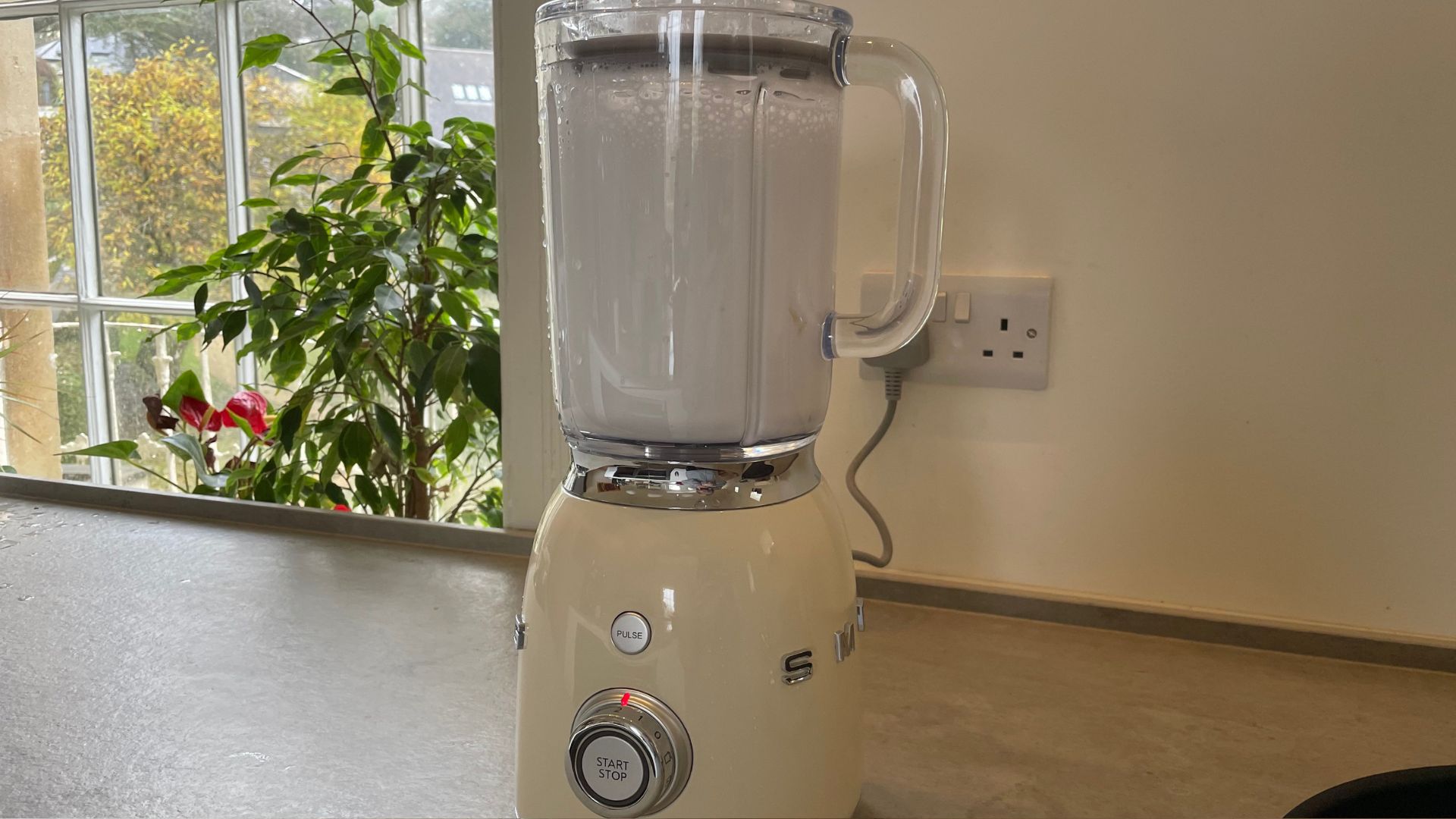
Thanks to the Tritan pitcher, the whole clean up process is easy. The pitcher goes in the dishwasher, as well as the lid, so all you need to do is give the base a wipe down. I actually prefer to hand clean my blenders, because I think it takes less of a toll on them than the harsh jets and chemicals in a washing machine. To do this, I put a squirt of washing-up liquid and some water into the pitcher and set it to blend. It’ll foam up quite a lot, so keep an eye on the water levels, but this should dislodge any bits and pieces out from under the blades. After a quick whirl around, the pitcher rinses clean. Whichever method you opt for will be easy, which always helps.
How does it compare?
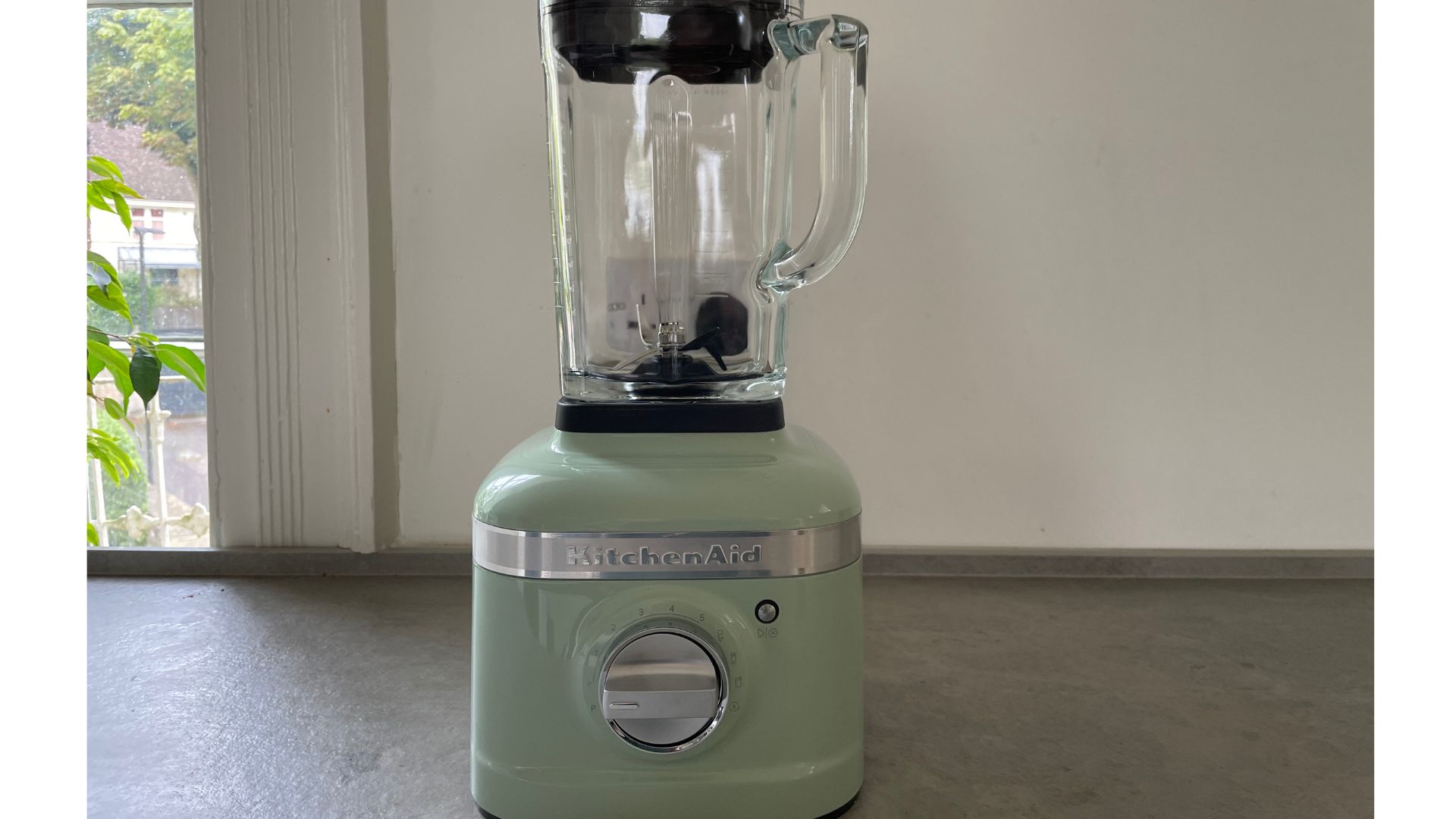
It’s difficult to find a blender that’s as beautiful as Smeg’s, but the one that springs to the front of my mind is KitchenAid’s K400. This offers a similar range of colours, stunning aesthetic, and family-sized capacity. One is blocky whilst the other is smooth, but that’s the only difference.
If you are willing to satisfy on award-winning style aesthetics, I have some better blender options out there. For about the same price, you could pick up a Vitamix Ascent Blender, one of the most iconic, impressive blenders of all time. Yes, it’s pricy and, whilst it might not be as beautiful, the Vitamix can whizz up hot soup, mist ice cubes in seconds, and blend just about anything. Technically, it’s superior, but it’s also bigger and clunkier.
If that’s the kind of thing you’re looking for and you want to save a little, I would recommend taking a look at the Ninja. This can make hot soups and sauces from whole ingredients, but it also covers off jams, ice creams, ice cones, and protein shakes. This is as versatile as the Vitamix, but it’s a fraction of the price. Granted, it might not last as long and it is a real pain to clean (you can’t submerge the pitcher), but it’s really great nonetheless.
Should you buy it?
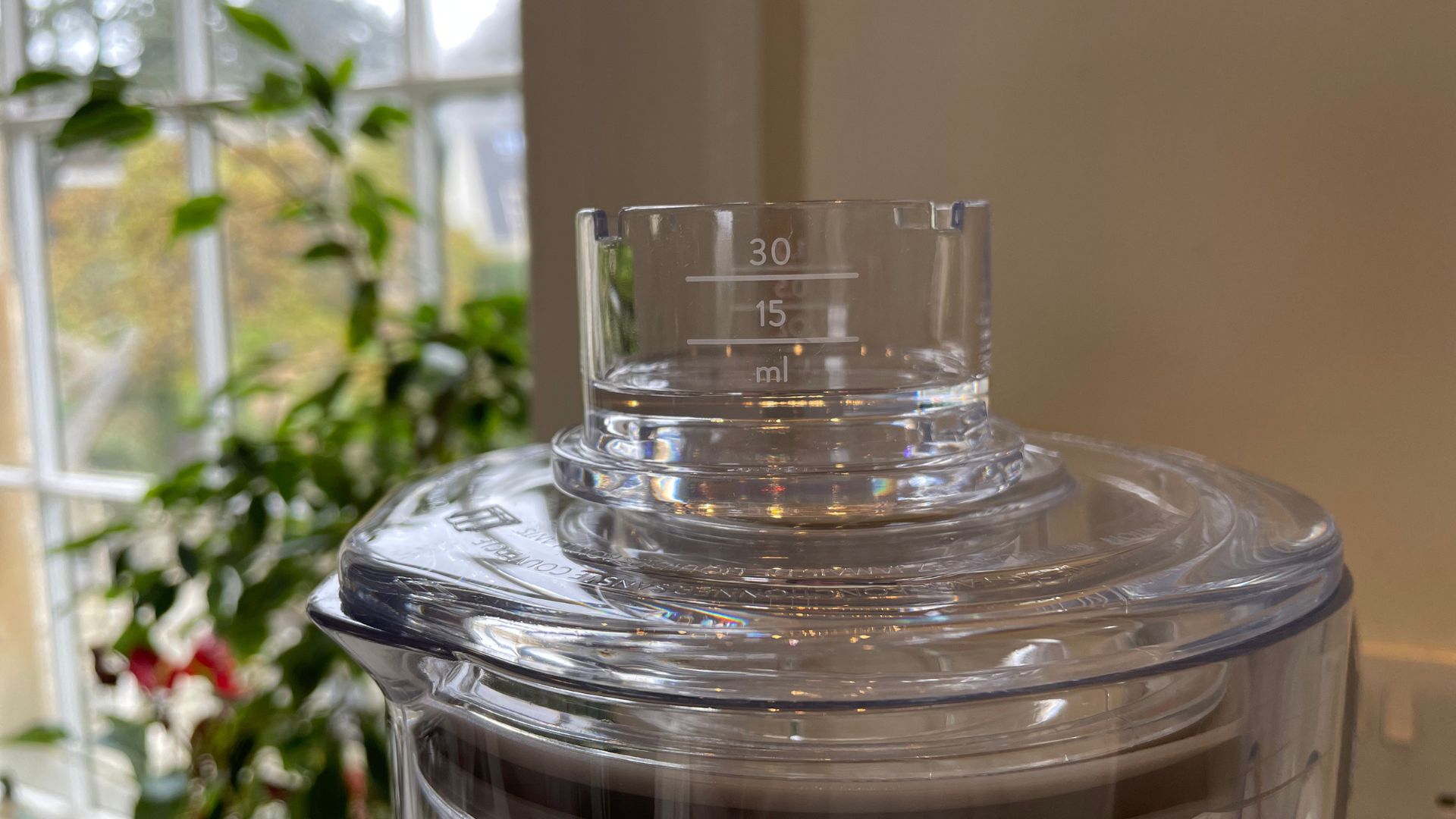
If you want a stylish blender to sit on your counter, the Smeg is the perfect option. It's low maintenance, easy to clean, and built to be robust. It'll cover family-sized smoothies, protein shake batches. and dips too, but if you'll be crushing ice, you might need something a little more robust.
How we test
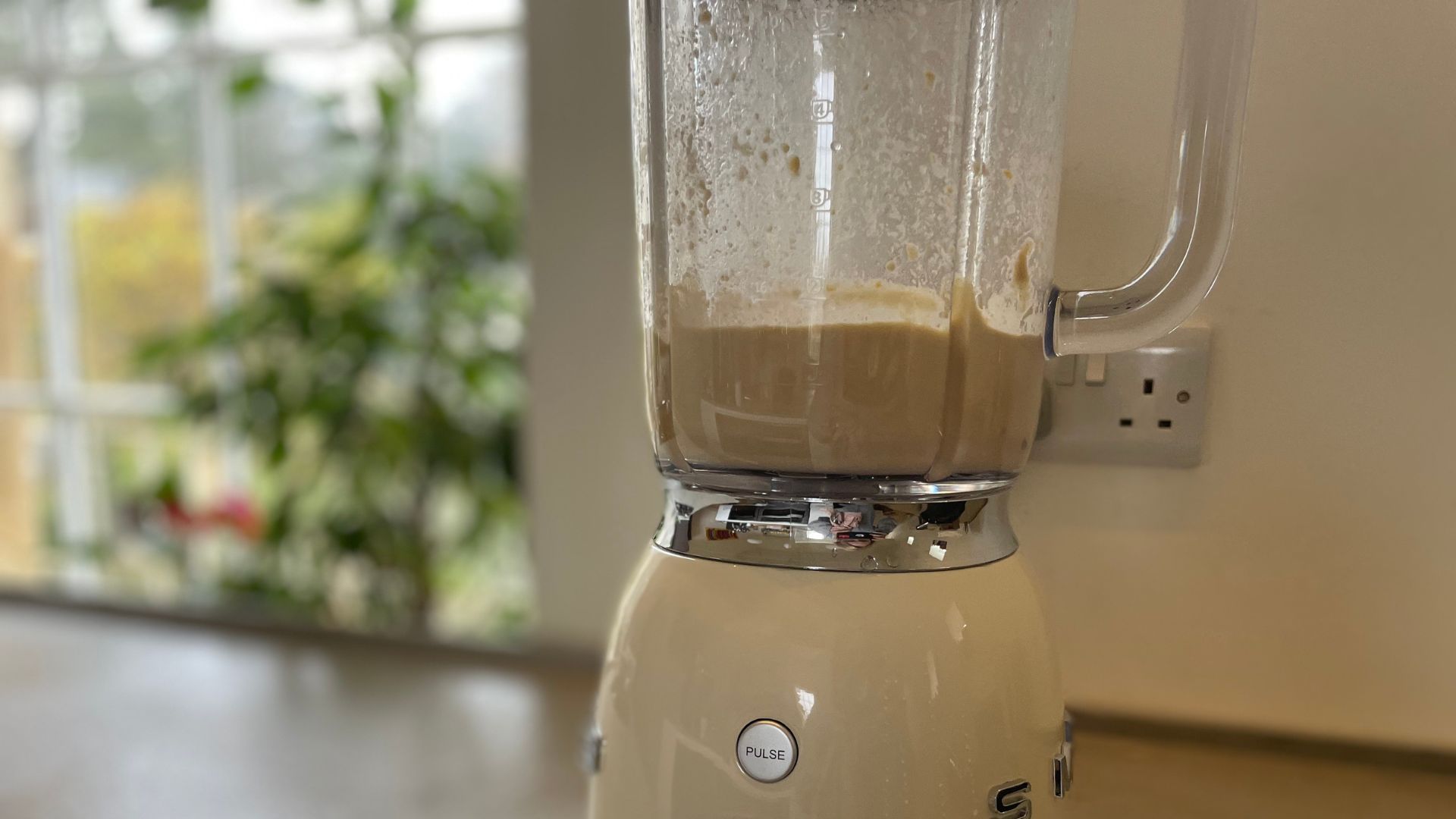
The process for how we test blenders at woman&home is rigorous. This review doesn't come about by chance. I spend my days researching the latest and greatest releases on the market. Then, when I see one that I think you'll like, I call it in.
I make notes on what the blender is like to unbox (sustainable, robust packing is really important) as well as what it's like to use. I have three simple tests that I put all blenders through: making smoothies, making hummus, and crushing ice. This tests how thorough the blades are across a range of different textures and liquid contents. My tests will help to show you how practical the blender is, whilst also whittling down who it suits.
I'll clean it up, compare it to similar models on the market, and will come to a conclusion on the value of the blender. In essence, my review should tell you everything you need to know about the blender before you buy it. If you still have questions, don't hesitate to email me.







